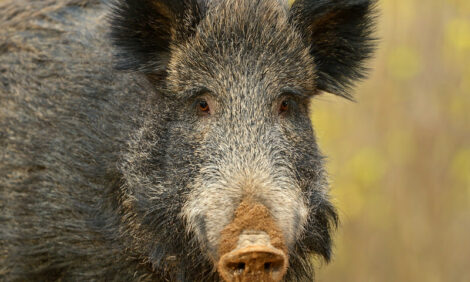



Economies of Scale in Hog Production
US Weekly Hog Outlook, 14th July 2007 - Weekly review of the US hog industry, written by Glenn Grimes and Ron Plain.The hog industry continues to concentrate. The percentage of U.S. production showed a decline between 2003 and 2006 for all-size producers producing less than 10,000 hogs annually. In 2003, 22 percent of the U.S. slaughter from domestic production was produced by producers producing less than 10,000 hogs annually. In 2006, producers producing less than 10,000 hogs annually produced only 15 percent of the U.S. domestic production.
This concentration is expected to continue. There are economies of scale in hog production and only limited barriers to entry or expansion.
Producers producing less than 50,000 hogs annually are networking with their neighbors. About one quarter of these producers worked with other hog producers in purchasing inputs. Working with other producers did not increase their feed milling activity much between 2003 and 2006 but it amounted to 14 percent in 2006. Hog marketing networking was steady with 2003 in 2006 and amounted to nearly one third of the producers. Information sharing and feeder-or-weaned-pig-production networking grew substantially between 2003 and 2006 and amounted to 22 percent and 26 percent in 2006 respectively. Networking for genetic access grew very little from 2003 to 2006 and amounted to 12 percent in 2006.
Hog producers producing less than 50,000 hogs annually also produce other commodities. An average of 91 percent produce corn, 85 percent produce soybeans, 30 percent produce wheat, 5 percent have a dairy operation, 20 percent have a beef cow-calf operation, 6 percent have a beef stocker operation, and 22 percent have a beef feeding operation.
The live weight of barrows and gilts in Iowa-Minnesota last week at 263.3 pounds per head was up 0.9 pound from a week earlier and down 0.1 pound from a year earlier. For the year of 2007 to date, weights of barrows and gilts are below 12 months earlier but have been a little above 2006 in the last six weeks. Most of the decline in weights last year is probably due mostly to circovirus but the higher price of corn may also be a factor.
Gilt and sow slaughter shows no signs that the breeding herd is being changed very much in either direction.
Hog prices continued under pressure this week with cash live prices this Friday morning $2 per cwt to $3.50 per cwt lower compared to seven days earlier. Weighted average negotiated carcass prices this Friday morning were $2.18 per cwt to $2.55 per cwt lower compared to a week earlier.
The top live prices Friday morning for select markets were: Peoria $43.50 per cwt, St. Paul $46 per cwt and interior Missouri $48.25 per cwt. The weighted average carcass prices Friday morning by geographic area were: western Cornbelt $66.23 per cwt, eastern Cornbelt $64.54 per cwt, Iowa-Minnesota $66.21 per cwt and nation $65.38 per cwt.
Cutout for pork carcasses stabilized this week after two weeks of declining prices. The cutout per cwt of carcass Thursday afternoon at $73.08 per cwt was up $0.77 per cwt from the same period last week. Loin prices were up $0.79 per cwt at $89.29 per cwt, Boston butts at $75.01 per cwt were down $0.40 per cwt, hams were down $0.18 per cwt at $55.85 per cwt, and bellies at $103.38 per cwt were up $5.08 per cwt from a week earlier.
Slaughter this week under Federal Inspection was estimated at 1,945 thousand head, up 0.1 percent from a year earlier.








